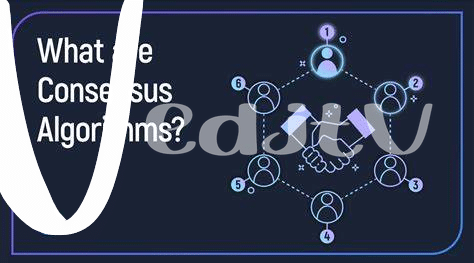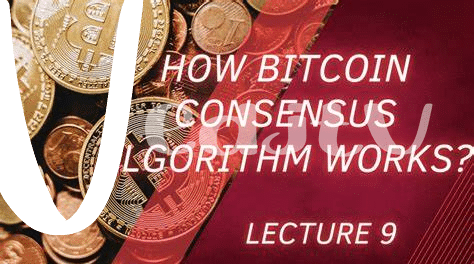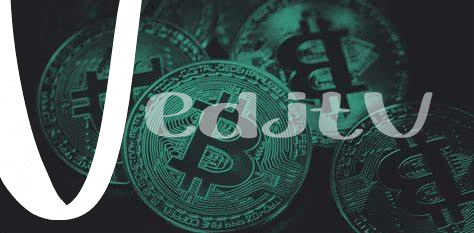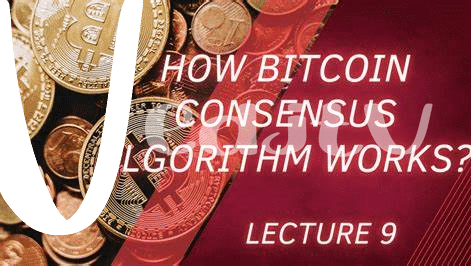What Is Hybrid Consensus Mechanism? 🤔

Imagine stepping into a room where two groups are trying to agree on the best way to make decisions. On one side, you have folks who believe in the power of everyone having a say, a bit like everyone in a town getting to vote on important matters. That’s like Proof of Work, the way Bitcoin currently operates, where miners solve complex puzzles to validate transactions. On the other side, there’s a group that thinks decision-making should be in the hands of a few trusted individuals, just like a council making important calls for a town; this represents Proof of Stake, a newer, energy-efficient method. Now, picture someone proposing a smart idea: why not combine the best parts of both methods? That’s essentially what a Hybrid Consensus Mechanism does. It blends the all-hands-on-deck democratic appeal of Proof of Work with the sleek, energy-saving efficiency of Proof of Stake.
| Approach | Details |
|———-|———|
| Proof of Work (PoW) | Everyone votes, using a lot of energy but highly secure. |
| Proof of Stake (PoS) | Only a few vote, saving energy but risking centralization. |
| **Hybrid Consensus** | **Mixes PoW and PoS, aiming for balance.** |
This mash-up creates a system that appreciates the hard work of solving puzzles, acknowledging the efforts equally with a say in decision-making, while also valuing the wisdom of the council approach, where holding more of the currency might mean you get more say in key decisions. This blend offers a promising future for digital currencies like Bitcoin, addressing concerns about energy usage without sacrificing the democratic ethos that makes cryptocurrencies so revolutionary.
Why Bitcoin Needs a New Consensus Mechanism 🚀
Imagine Bitcoin as an old, reliable car that’s carried us down the digital currency highway for years. But as roads become busier and technology advances, our trusty car needs an upgrade to keep up. Enter the idea of a “hybrid consensus mechanism,” a shiny new engine for Bitcoin to ensure it remains at the forefront of digital investment. This upgrade is needed because the current way Bitcoin decides on new transactions and adds them to the blockchain – think of it as the car’s current engine – is becoming a bit outdated. It’s like using a map in the age of GPS. It works, but it could be so much better. With a hybrid model, Bitcoin could become faster, more energy-efficient, and even more secure, making it an even more attractive option for investors. However, embracing this change isn’t simple. It’s like combining the best parts of a classic car with the efficiency of a modern electric vehicle – a delicate balance that needs to be struck. For more insights into navigating the rapidly changing world of Bitcoin investment, especially amidst market volatility, check this out: https://wikicrypto.news/navigating-volatility-ai-driven-bitcoin-trading-strategies-unveiled.
Pros of Hybrid Solutions for Bitcoin 💡

Imagine a world where Bitcoin isn’t just known for its pioneering role but also for its efficiency and inclusivity. This is where hybrid solutions come into play, stirring excitement among investors and tech enthusiasts alike. Blending the best of both worlds, these mechanisms offer a smoother, faster way of confirming transactions, akin to joining a fast-track lane where you spend less time waiting and more time enjoying your journey. It’s not just about speed; it’s also about welcoming more participants into the Bitcoin ecosystem. By reducing the energy and computational power needed, we open the doors wider to individuals and small-scale miners, making the Bitcoin community richer and more diverse.
Moreover, embracing hybrid solutions could be like adding a turbocharger to Bitcoin’s engine when it comes to security. Combining multiple verification processes not only makes it tougher for unwanted players to disrupt the system but also adds layers of trust and reliability, which are golden in the world of digital currencies. This leap towards a more accessible, faster, and secure network could transform Bitcoin from the gold standard of digital currency into a beacon of futuristic finance, charming a broader audience beyond the tech-savvy and environmentally conscious. In this light, the possibility of Bitcoin leading a new era of investment becomes not just a dream, but an exciting, tangible future shimmering on the horizon.
Cons: Challenges Ahead for Hybrid Mechanisms 🚧

Exploring new ways to keep the Bitcoin network safe and efficient, like hybrid consensus mechanisms, definitely sounds exciting. But, it’s not all smooth sailing. One major challenge is the technical complexity. These hybrid systems can be tough to understand and even tougher to implement, requiring significant changes to the Bitcoin protocol, which is no small feat. Then there’s the resistance from the community. Bitcoin enthusiasts and miners have spent years mastering the current system, so convincing them to adopt a new method might be an uphill battle. Additionally, any change in the consensus mechanism opens the door to new security risks. Hackers are always on the lookout for vulnerabilities, and during the transition period, the network could be more exposed than ever. What’s more, achieving a balance between the two mechanisms that make up a hybrid model—speed without sacrificing security, and vice versa—is like walking a tightrope. It’s a delicate balance that requires meticulous planning and execution. For those looking deeper into how Bitcoin can fit into broader bitcoin and inflation investment strategies, these potential roadblocks in adopting hybrid mechanisms highlight the importance of understanding the intricate dance between innovation and risk mitigation in the world of cryptocurrency.
Case Studies: Hybrid in Action Today 🌍
In the rapidly evolving world of digital currencies, some innovative projects are already testing the waters with hybrid consensus mechanisms, offering a sneak peek into a future that might just redefine Bitcoin’s journey. Take, for example, Decred and Horizen, two pioneering projects that blend the robust security and democratic ideals of Proof of Work (PoW) with the efficiency and scalability offered by Proof of Stake (PoS). These case studies illustrate the tangible benefits of such a hybrid approach. Decred emphasizes governance, allowing coin holders to vote on changes to the protocol, thus ensuring that everyone has a say in the future direction of the project. Horizen, on the other hand, extends this model to include a sidechain platform which broadens the scope for decentralized applications, pushing the envelope on what cryptocurrencies can achieve. This peek into the current application of hybrid mechanisms not only showcases their potential to tackle scalability and energy consumption issues but also highlights the possibilities they open up for increased participation and innovation in the blockchain space.
| Project | Type | Key Feature |
|---|---|---|
| Decred | Hybrid PoW/PoS | Democratic Governance |
| Horizen | Hybrid PoW/PoS | Sidechain Platform for dApps |
Future Predictions: Where We’re Headed with Bitcoin 🌟

As we peer into the crystal ball of Bitcoin’s future, speculation is ripe with possibilities. Imagine a world where Bitcoin and its blockchain technology have evolved, merging with cutting-edge advancements in artificial intelligence. This fusion could open up new horizons in bitcoin and artificial intelligence investment strategies, making transactions not only faster and more efficient but also smarter. The algorithms powering Bitcoin could potentially predict market trends, giving investors a significant edge.
On another exciting front, the growth in global remittances showcases Bitcoin’s potential to revolutionize how we send money across borders. Lower fees, increased security, and lightning-fast transactions could make Bitcoin the go-to for international transfers. This future hinges not just on technological advancements but on building a global consensus around the use of hybrid mechanisms, navigating through regulatory challenges, and ensuring widespread adoption. As the world becomes more interconnected, Bitcoin’s journey from a niche investment to a global financial pillar seems not only possible but inevitable. 🌍💫
